The Ultimate Beginner’s Guide to Topsoil and Compost
Whether you are a serious gardener or do it as a hobby, we know you are always looking for ways to make your garden healthier and more productive!
Today, we want to tell you all about two Zimmerman Mulch products you can use to improve your garden or landscaping: topsoil and compost.
We will review some of the components that make up your soil and why it’s essential to maintain soil health in your garden. Then we will learn about the differences between topsoil and compost and how to use each to the best advantage.
Are you ready to learn how to use topsoil and compost to create the garden of your dreams?
Let’s get started!
What’s the Big Deal About Soil Health?
You have probably heard about soil health. But what is the big deal about it? Does soil health matter?
You bet it does!
Healthy soil is the foundation for a healthy garden.
When you have healthy soil, you can grow a lush, beautiful, healthy garden that looks like it came out of the Homes and Gardens magazine. But if your soil is depleted or of bad quality, it will struggle to sustain healthy plants.
Did you know your soil is a lot more than just dirt?
That’s right! So much is happening in your soil, primarily out of sight below the surface. Every square inch of your soil is home to billions of microorganisms that help your garden thrive. In reality, your soil is a living ecosystem with cycles and organisms of its own.
Here are a few things living in your soil you might not know about:
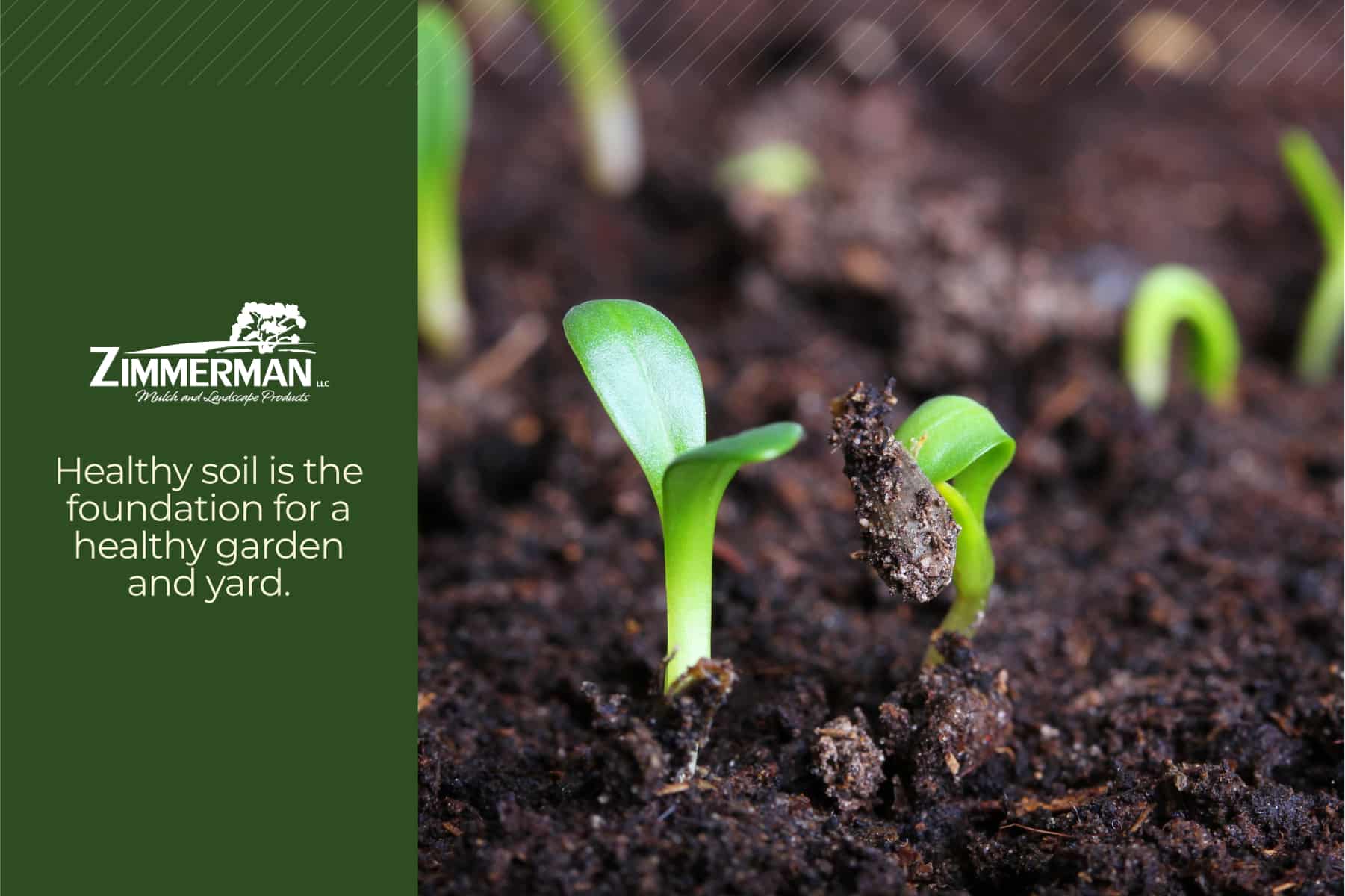
- Bacteria
- Fungi
- Nematodes (microscopic roundworms)
- Garden worms and insects
These organisms contribute to the health of your soil and, consequently, the health of your plants. A healthy soil ecosystem provides plants with access to three things:
- Air
- Water
- Nutrients
The type of soil in your garden (chalky, peaty, clay, etc.) and the living organisms in your soil can help your plants get what they need. For example, earthworms burrow through the soil and create pathways that allow air and water to circulate. Certain fungi form symbiotic relationships with plants, bringing water and nutrients to the roots. And adding organic material like compost can improve water movement and drainage in hard-packed soil.
You get the idea, right? Plants need certain things to thrive. The health of your soil makes a big difference in whether your plants can get the things they need.
So improving the health of your soil ecosystem is your first step toward a lush, healthy garden.
Soil Testing
Understanding your soil is the first step toward improving its health, so if you want to take your garden to the next level, consider testing your soil.
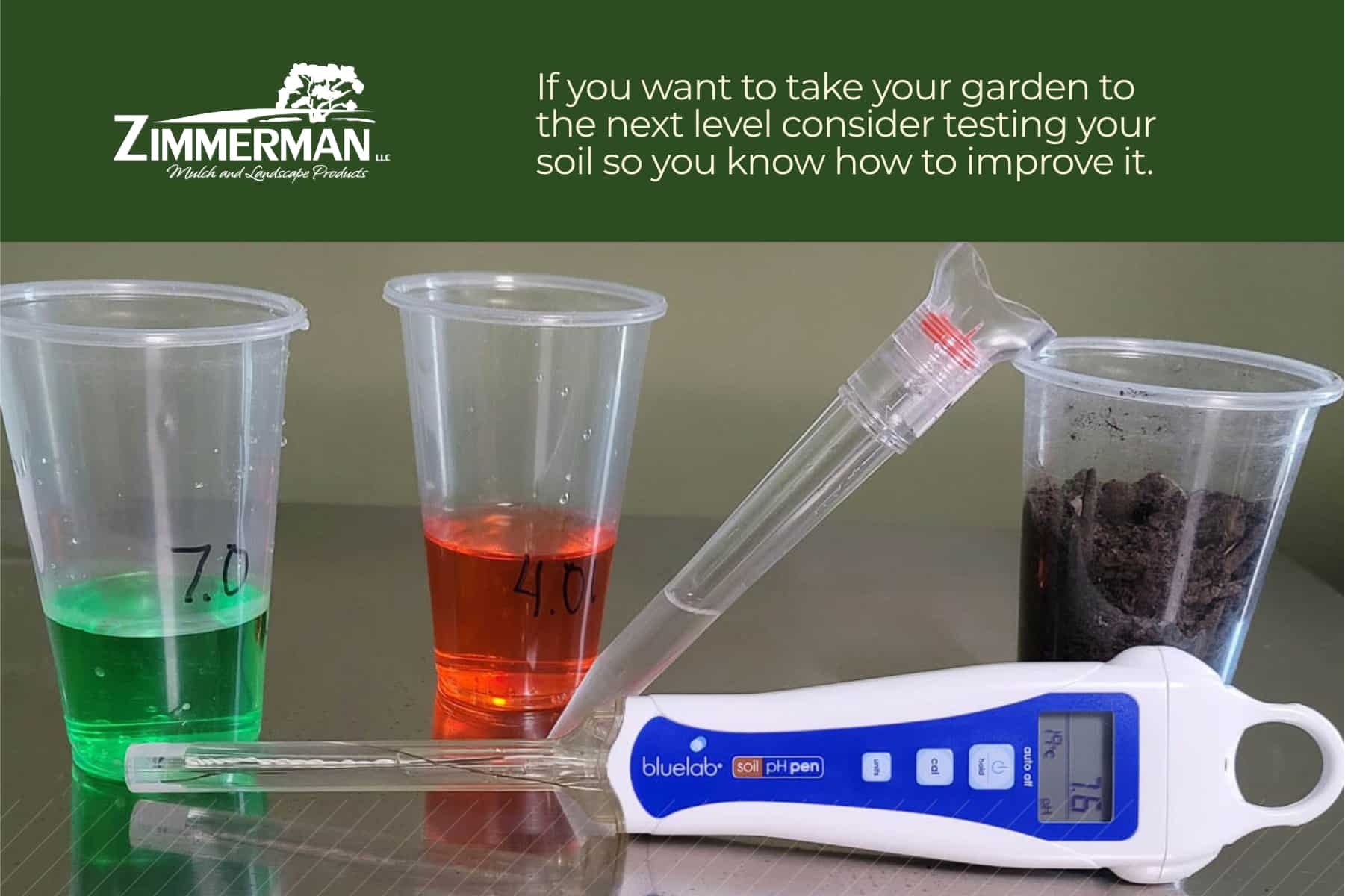
But why test your soil?
Well, your plants need 17 types of nutrients to grow. These include:
- Macronutrients: Nutrients your plants need in large quantities. These are carbon, oxygen, and hydrogen, which come from air and water, and nitrogen, phosphorous, potassium, calcium, and magnesium, which come from fertilizer and organic matter.
- Micronutrients: Nutrients your plants need in small quantities. These are iron, manganese, molybdenum, chlorine, boron, copper, and zinc. These usually come from the soil.
These nutrients all need to be present in your plants’ environment. Testing your soil can show you which nutrients you lack and how to correct them. Your garden will then be lush and thriving in no time!
Difference Between Topsoil and Compost
Now that we've had our soil health crash course, let's switch gears and talk about topsoil and compost, specifically how you can use topsoil and compost to improve your garden.
Let's look at the difference between these two materials. Then, once we know what they are, we can find out how to use each kind to build the soil in your garden.
-
What Is Topsoil?
Topsoil is the top layer of soil above the bedrock. It is the most nutrient-rich layer of soil and contains the most organic matter. However, most topsoil does not include all the organic matter your plants need to reach their full potential. The more organic matter you have in your soil, the better your soil is for growing plants.
Topsoil is taken from construction sites or fields and sold in large quantities. Sometimes it adds a little organic matter to make it better suited for plants.
Good topsoil will feel nice and soft from the organic matter mixed into it, and it will not have too many rocks, sticks, or other debris floating around in it.
-
What Is Compost?
Compost is a mixture of natural materials decomposing into rich, dark dirt. Some gardeners call compost "black gold" because it is nutrient-packed and beneficial to plants.
Compost is made by mixing table scraps, shredded leaves or sticks, and other organic materials and letting them naturally decompose. The result is fabulous for improving your soil!
Good compost should be broken down into tiny particles and have a dark chocolate color. It shouldn't contain partially decomposed material, sticks, or leaves and should have a smoother consistency than mulch.
Now that we know the difference between topsoil and compost, let's find out how you can use each to improve your landscaping or garden.
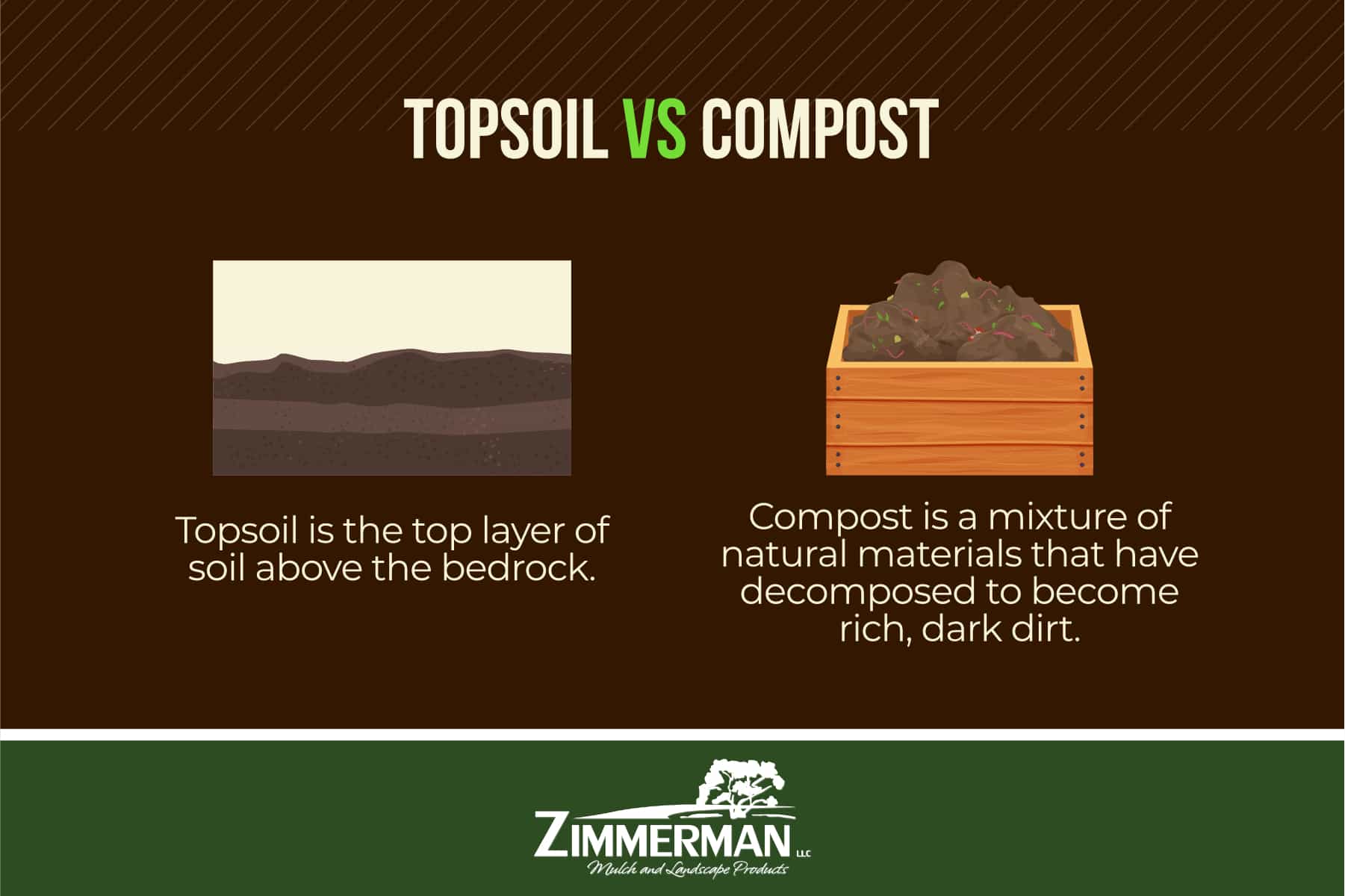
Side note: Is compost the same as humus?
No. Compost and humus are great for your garden, but they are not the same.
Humus is essentially a very old compost that is completely broken down until it cannot be broken down further. It is a dark, organic material that can hold up to 90% of its weight in water and lasts for hundreds of years.
Compost is just the beginning stage of humus.
How To Use Compost To Improve Your Garden
Compost is not what you want to use to level an area, fill a hole, or create a base for your garden. Compost is for enriching your existing topsoil. Adding compost to your soil boosts it in several ways:
- It helps improve the soil structure.
- It enables the soil to retain moisture.
- It increases the earthworm and microbial population in your soil, which helps the health of your soil ecosystem.
- It provides a slow release of macronutrients into the soil, meaning your plants will get a steady source of nutrients.
Common myth debunked:
Most people believe that since compost is good for plants, it contains many nutrients. But while it’s true that compost does contain some nutrients for your plants, in reality, it’s more about the nutrients the compost makes available to the plants. Adding compost improves soil aeration, drainage, and microbial population. This improved aeration, drainage, and microbe population make more nutrients readily available to plants, helping them thrive.
That is the real reason why compost is so good for your garden!
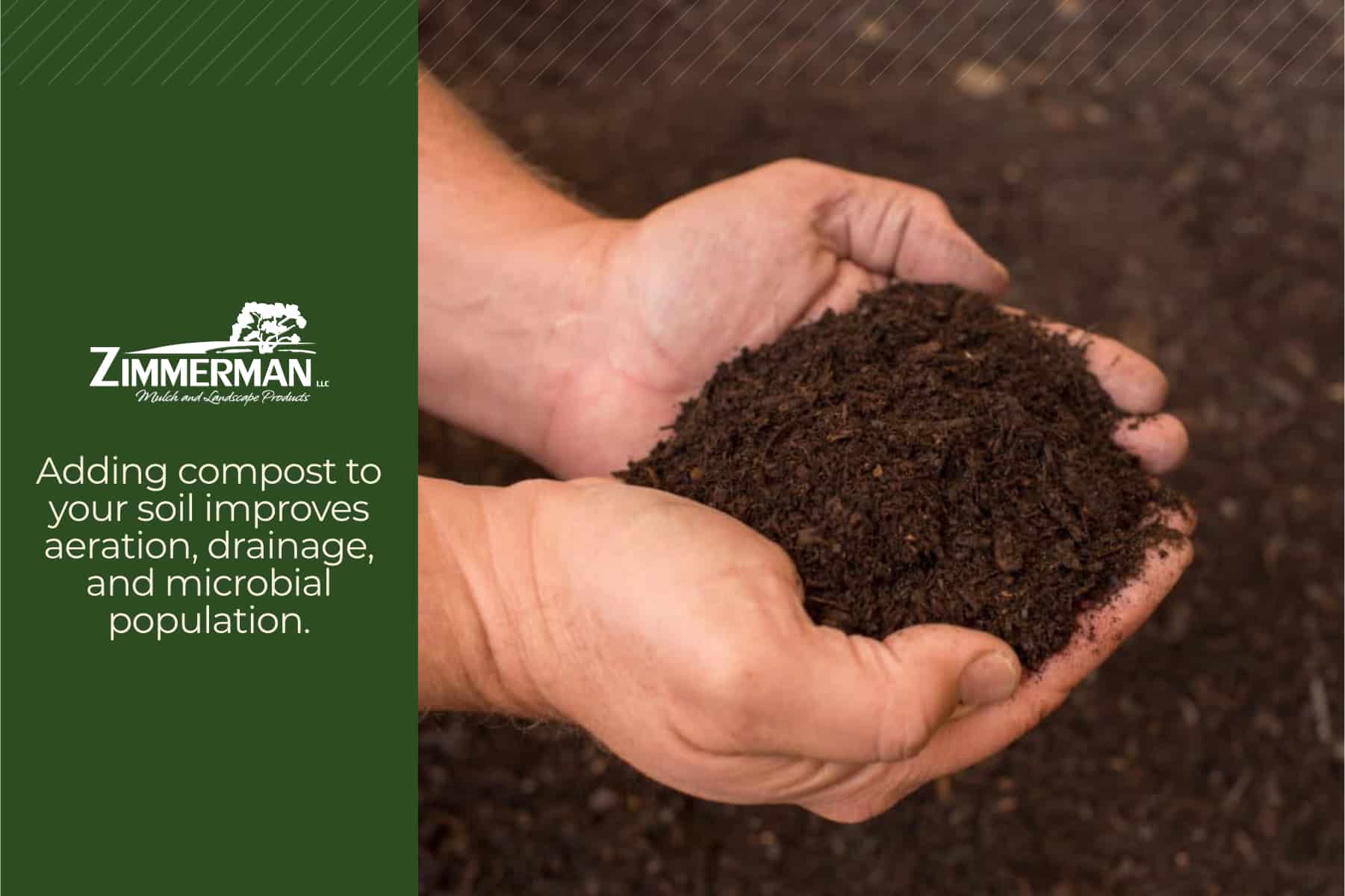
7 Ways To Use Compost
Here are some great ways to use compost to boost your garden and landscaping.
- Amend your garden soil: Mix 1-2 inches of compost into the top 3-5 inches of soil. It will enrich your soil and unlock all the great nutrients your soil already contains!
- Give plants a local boost: When planting your garden, put a handful of compost into each hole before you put in the plant. Then, once your plants are sprouted and proliferating, add a half-inch layer of compost around the base of the plant.
- Enrich with compost in the fall: Spread several inches over the top of your soil. Then till it into the earth in the springtime.
- Use compost as mulch around trees and flowers: You can apply a layer of compost to the roots of flowers to keep them from freezing and lock in the moisture around them. You can also use it as a nutrient-rich mulch around your trees.
- Replenish potted plants and window boxes: The soil in potted plants sometimes gets depleted too! You can use a little compost to help it out. Mix your potting soil using compost, topsoil, or sand.
- Rejuvenate your lawn: To rejuvenate your grass, spread up to ½ inch of compost over your backyard. However, remember that more is not always better - making it too thick is possible! If you spread it too thickly, it can smother and damage the grass.
- Treat bare spots in your yard: If your yard has a bald spot, it can help to till the area up, mix in some compost, and reseed it. The compost boosts the grass seed and keeps the soil from compacting too much.
Compost is an excellent material to apply locally or in small amounts to enrich and revitalize plants.
If you want to try some today, check out Zimmerman Mulch’s topsoil and compost page.
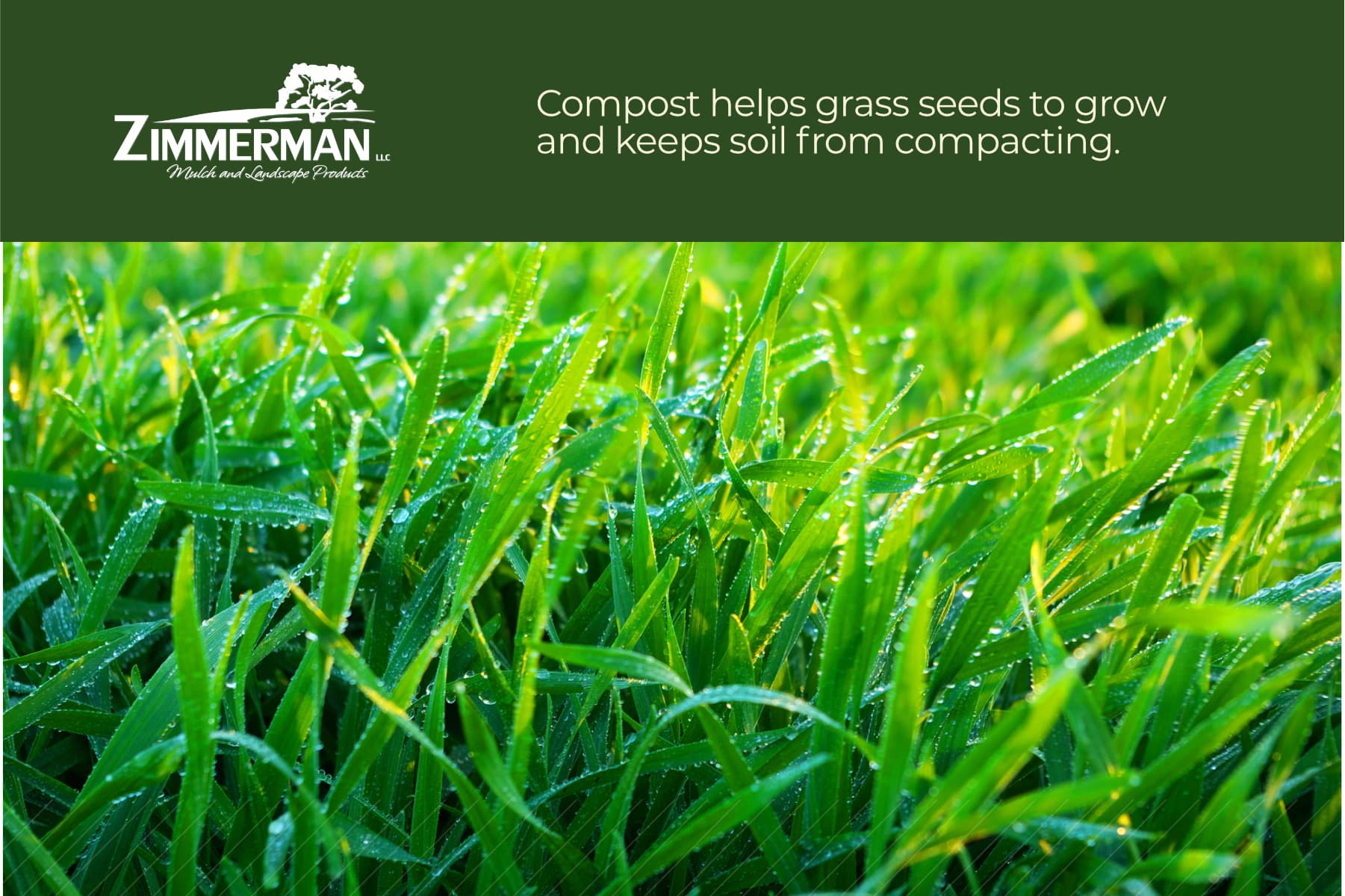
How To Use Topsoil To Improve Your Garden
You will want some topsoil if you want to level an uneven area, fill a hole, or create a new flower bed. You can buy topsoil in large quantities, usually cheaper than compost.
Topsoil is like a dumbed-down version of compost. It's the richest and most nutrient-dense layer of soil, and it contains a lot of organic matter, but it's not as richly concentrated as compost. If you are creating a new raised bed or need to amend low-quality garden soil, adding a bulk amount of topsoil with a smaller amount of compost is best.
Topsoil is a mixture of silt, clay, and sand. The topsoil in different areas may contain different ratios of these components. You can use different types of topsoil to fix various problems with your existing soil.
For example, sandy topsoil helps with drainage and keeps soil from compacting. It is excellent for improving packed dirt that collects water on top. On the other hand, silty soil holds moisture but can become compacted. A dry, sandy garden could benefit from some silty topsoil.
Here are six ways you can use topsoil in your gardening and landscaping:
- Fix bald spots in your yard: If it is patchy, spread a layer of topsoil over the bald spots and reseed them. Please make sure the seeds get adequate water while they sprout.
- Replenish depleted soil: The soil in your yard or garden can quickly become depleted. To refresh it, add a layer of fresh topsoil and till it into your existing soil. Then add another layer of topsoil on the surface.
- Improve soil drainage: It doesn't drain well when soil becomes too compacted. To improve drainage, till the compacted soil and add some sandy topsoil. Till the old and new soil together and it should drain much better.
- Create a new garden: If you want to create an entirely new garden, raised bed, or flower bed, use quality topsoil to build a base.
- Refresh the appearance of your soil: When soil gets depleted, it can lose its rich, dark color. Adding a layer of topsoil to your garden or landscaping can help it look vibrant again.
- Level uneven spaces: If your yard has low spots or holes, fill them with new topsoil and seed grass.
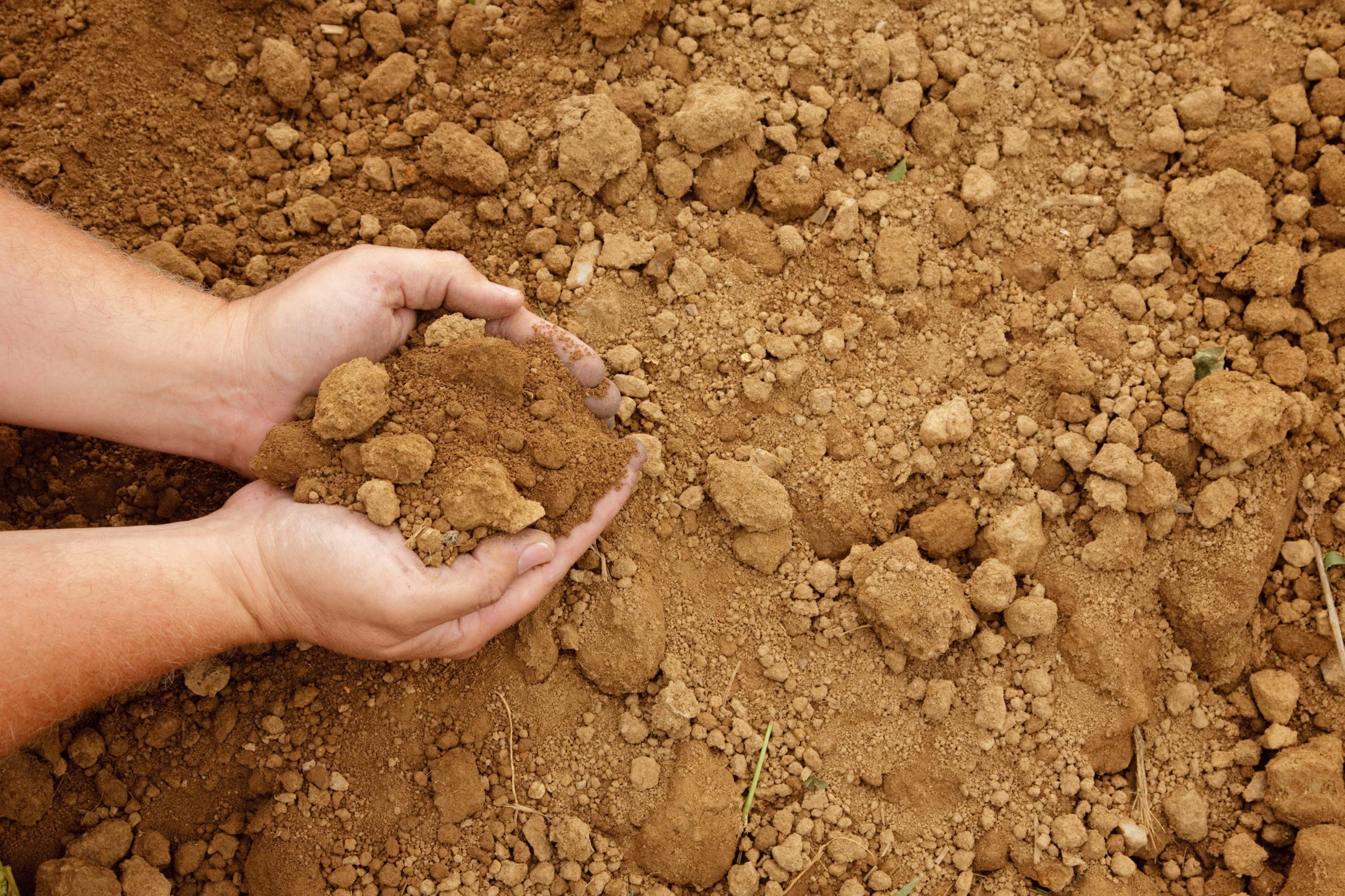
So to sum it up, the best way to use topsoil and compost is in combination. Topsoil provides the soil's base and bulk, and a little compost offers that extra boost of richness and nutrients.
CONCLUSION
Now you know more about compost and topsoil and how to use them to improve your yard and garden.
We hope this helps you create your dream outdoor space!
Wondering where you can get compost and topsoil?
Check out the varieties of topsoil and compost we have at Zimmerman Mulch. We also carry other outdoor living products, which include:
And more! Check them all out online. We have everything you need to create a stunning backyard landscape.
Give us a call today! We look forward to hearing from you.